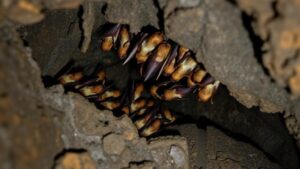Investigating the glowing cave systems of the Appalachian Mountains tied to stories of subterranean creatures.
Investigating the Glowing Cave Systems of the Appalachian Mountains
The Appalachian Mountains are known for their stunning landscapes, rich biodiversity, and ancient history. But, one of their most intriguing features lies beneath the surface: the glowing cave systems that have captivated explorers and storytellers alike. These subterranean realms not only boast fascinating geological formations but are also tied to a variety of legends about mysterious creatures dwelling within the depths.
A Glimpse into the Glowing Caves
Located primarily in West Virginia, Virginia, and Kentucky, the Appalachian cave systems are home to bioluminescent organisms that glimmer with an ethereal light. One of the most famous of these caves is the Mammoth Cave System in Kentucky, which is the longest cave system in the world, extending over 400 miles. Within its depths, visitors may occasionally spot fluorescent fungi and certain types of glowworms, creating an otherworldly experience.
Also, the firefly species known as Photinus carolinus can sometimes be found in these caves, illuminating the dark with their synchronized flashing patterns. This phenomenon can be best appreciated during the late spring and early summer, particularly around the months of May and June.
Legends and Subterranean Creatures
Alongside the glowing beauty of these caves exists a rich tapestry of folklore related to subterranean creatures. Local legends have long suggested the presence of unusual beings living in the depths, often tied to the idea of hidden worlds beneath our own.
- The Wampanoag Tribe: Native American stories often include references to “little people” dwelling in caves, sometimes portrayed as benevolent guardians of the Earth.
- The Brown Mountain Lights: In North Carolina, mysterious glowing orbs have been reported on Brown Mountain, spurring tales of spirits and lost souls in the adjacent cave systems.
- The Cave Ghosts: Many caves across the Appalachians claim to host ghosts of miners or early settlers, suggesting a connection between human history and the natural world in these mysterious environments.
Scientific Wonders and Biodiversity
From a scientific perspective, the bioluminescent properties of organisms found in Appalachian caves are crucial for understanding wider ecological contexts. For example, the glow emitted by certain fungi serves a vital role in attracting insects, which assist with pollination and nutrient distribution within cave ecosystems.
Research has shown that these caves serve as unique habitats that support a variety of species not found elsewhere. According to a 2022 study published in the journal Ecology, over 1,000 species of invertebrates have been cataloged in the Mammoth Cave System alone, making it a significant area for biodiversity conservation efforts.
Conservation Efforts
Due to their ecological importance, many caves in the Appalachian Mountains are protected under various conservation programs. For example, Mammoth Cave National Park was established in 1941 and is designated as both a UNESCO World Heritage Site and a Biosphere Reserve. These protections are vital, as they not only preserve the unique species that inhabit these caves but also protect the fragile ecosystems that rely on them.
Visiting the Caves
For those interested in exploring these glowing caves, several caves offer guided tours. Visitors to Mammoth Cave National Park can take various tours that allow them to witness the glowing organisms in their natural habitat while learning about the geology and history of the area. It is recommended that individuals check the parks official website for updated information regarding seasonal tours and special night watch programs that may focus on bioluminescence.
Conclusion: Old Legends and New Discoveries
The glowing cave systems of the Appalachian Mountains hold not only natural beauty but also historical significance and ecological urgency. As we delve deeper into these underground worlds, we uncover a fascinating interplay between the legends of subterranean creatures and the scientific wonders that thrive in darkness. By embracing both the enchanting folklore and the importance of conservation, we can ensure that these magical caves continue to glow for generations to come.



